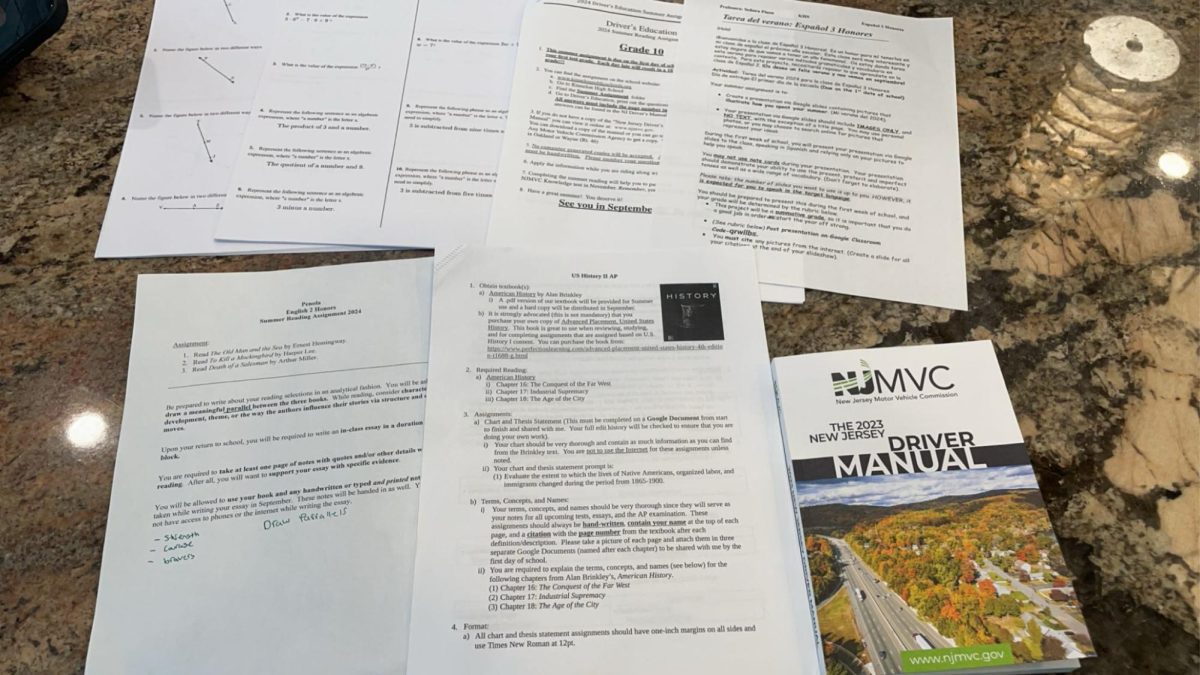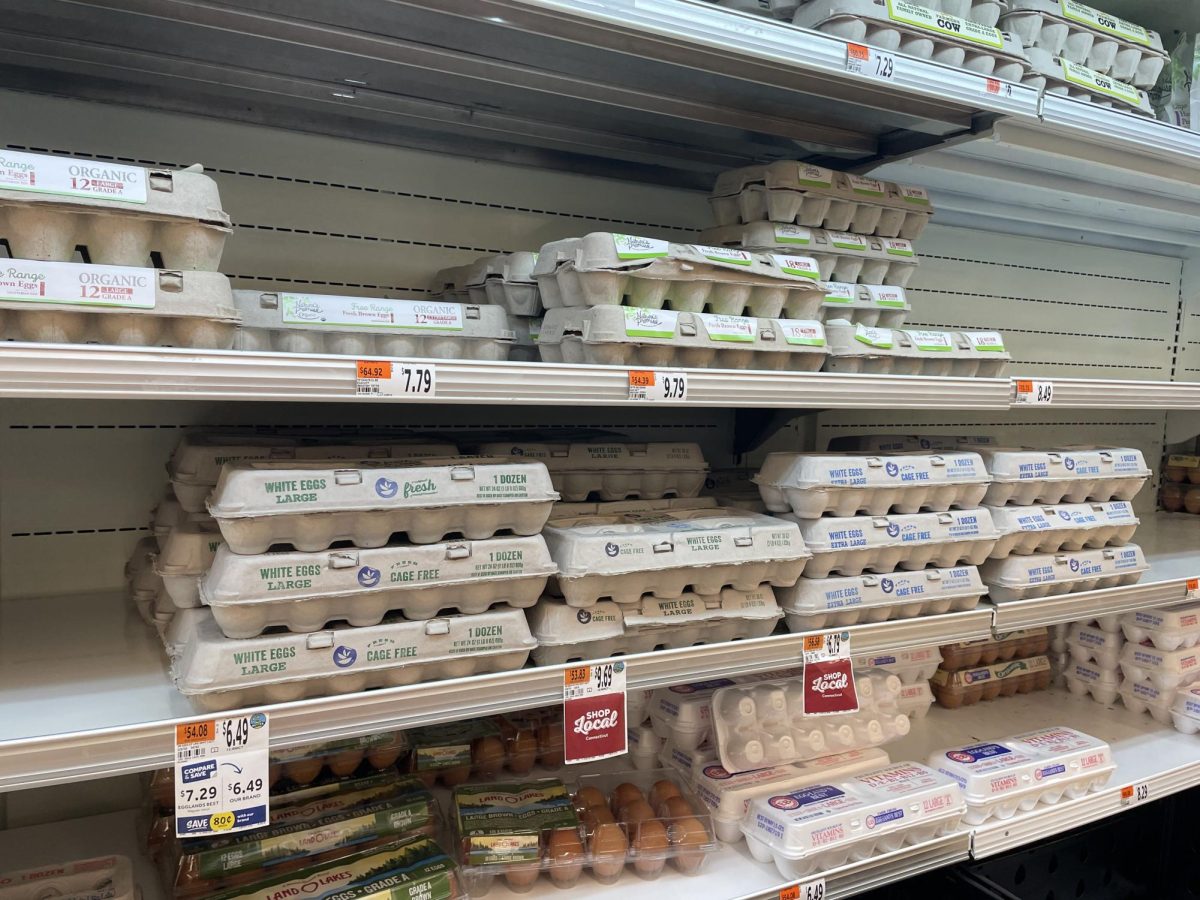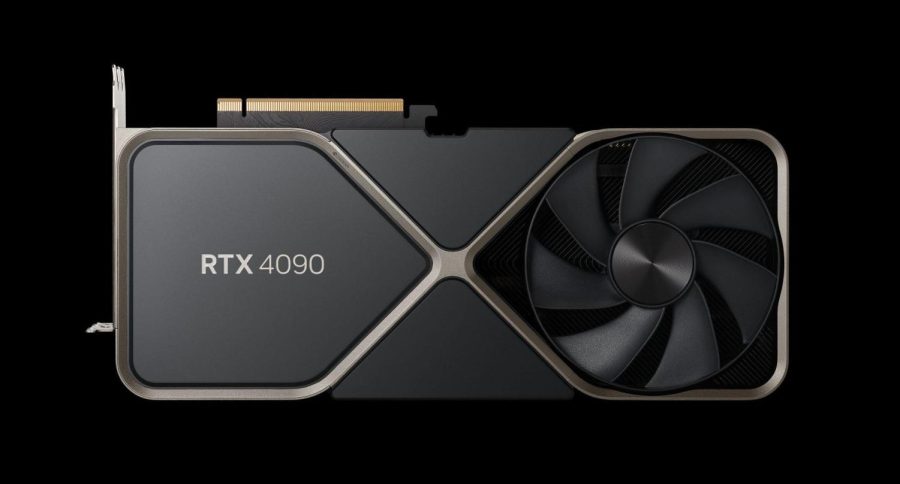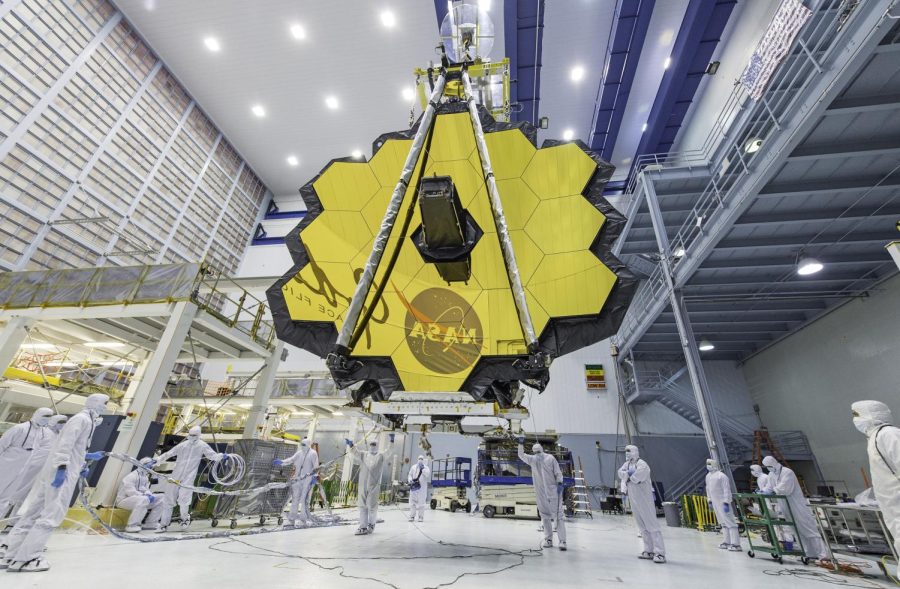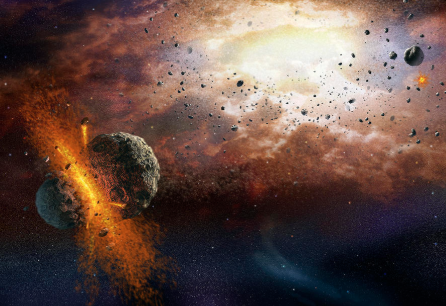
Earth, the Moon, the Sun, Venus; all features that make up our solar system. But, how did our solar system, home to more than 550,000 asteroids, 181 moons, eight planets, and five dwarf planets, form?
Well, the answer starts with the Big Bang, a theory about how the Universe came to be, approximately 13.7 billion years ago. Around 4.5 billion years ago, gravity pulled a large cloud of dust, gas, and atoms together (all remnants of the Big Bang or previous star deaths), forming a nebula that would soon create our solar system and the rest of its features.
Cold temperatures caused gas to clump together, and slowly, the cloud became denser, eventually becoming so dense that the center began to collapse (possibly with the help of a shock wave of a nearby exploding star). When it collapsed entirely, a solar nebula- a disk of material spinning around the proto-Sun- was formed.
The atoms in the proto-Sun began to hit each other, generating heat and energy, and as the heat began to rise, the atoms hit each other more frequently and with more force. It eventually got to a point where the atoms began to fuse, causing hydrogen atoms to combine, forming helium atoms, the process generating a tremendous amount of energy. This process, called nuclear fusion, allows a small amount of matter to generate a great deal of energy. During fusion, the Sun started to blast out a strong stellar wind that kept it from falling inward and helped to clear out any debris, creating our solar system’s planets.
The disk of debris that remained near the Sun and that provided the matter for the planets only remained for 100 million years, which gave the soon-to-be planets a short amount of time to take in gases since the Sun evaporated any gas near it.
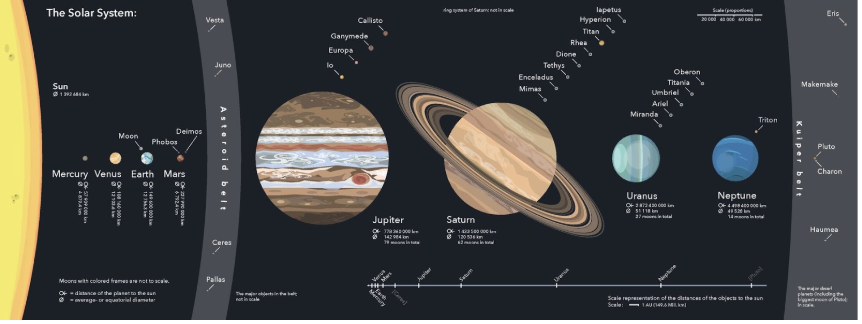
The solar system in relative sizes, but not distances.
From Mercury to Neptune, all eight of the planets started as specks of dust, and after millions of years of gently colliding and sticking together, the small grains of dust eventually got bigger and bigger, some being able to obtain enough mass for gravity to shape them into spheres, while others remained bumpy and craterous, lacking any definitive shape. The planets that formed closest to the Sun were really only comprised of rocky materials due to ice and gas evaporating quickly, leaving the gas and ice towards the fringes of our solar system. This is why Mercury, Venus, Earth, and Mars (terrestrial planets) are all rocky and smaller, while Jupiter and Saturn (gas giants) and Uranus and Neptune (ice giants) are all bigger and made up of the gas and ice the Sun was not able to melt and evaporate.
There are many more features of our solar system other than the Sun and planets, however, like the Kuiper Belt and the Oort Cloud.
Beyond all eight of the planets, towards the edges of our solar system, lies the Kuiper Belt, rings of trillions of pieces of icy material and home to the dwarf planet, Pluto. The Belt formed from the remnants of the Sun’s and planets’ formations- material that managed to evade the gravitational pull of planets such as the giant, Jupiter. All the material here slowly orbits the Sun, and while the orbits generally remain stable, some objects occasionally do have their orbit shifted when they stray too close to Neptune.
Going even further out, beyond the Kuiper belt, lies the Oort Cloud, a spherical shell that surrounds our solar system. While it has never been directly observed, its presence was predicted by using mathematical models and observing comets that may have come from this part of the solar system. Like the Kuiper Belt, the Oort Cloud is made up of icy pieces of natural (non-man made) space debris ranging from the size of mountains or larger, however, scientists still lack information on this part of our system.
For more information about space and our solar system, visit: https://www.nasa.gov/

